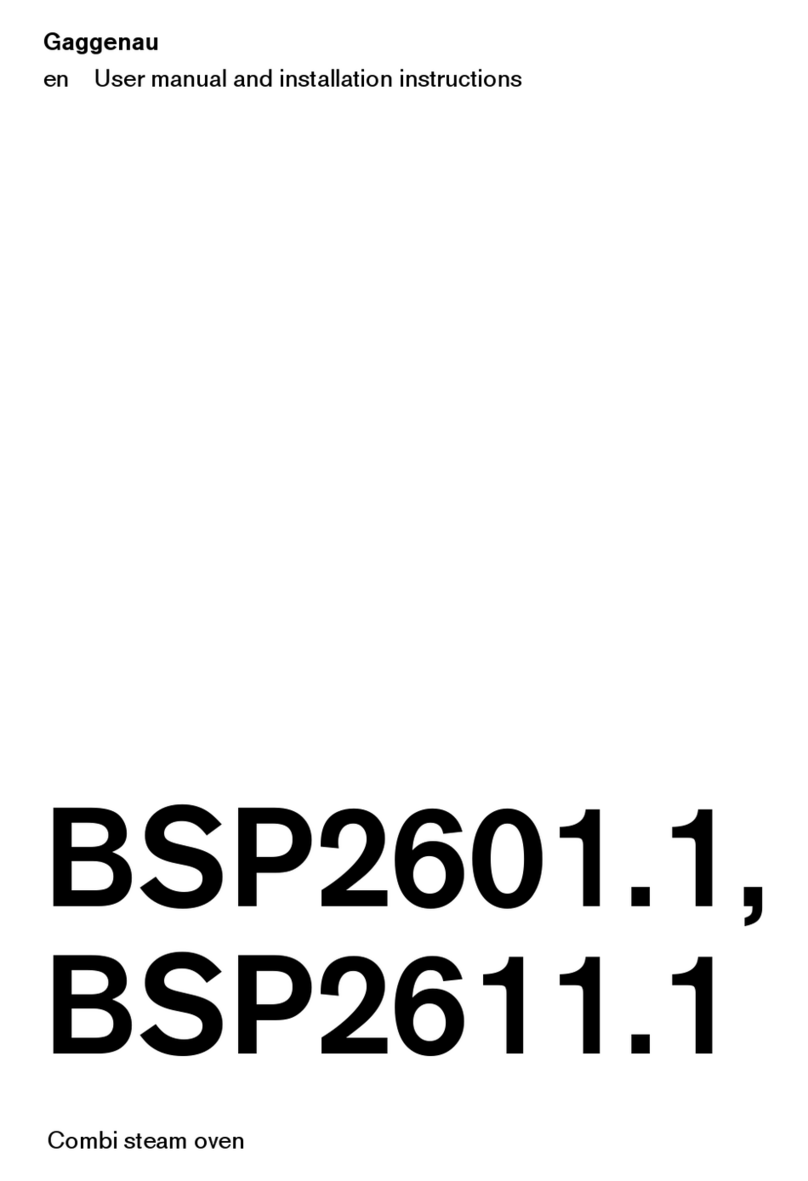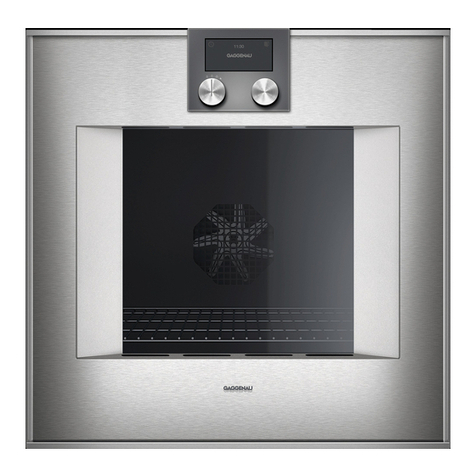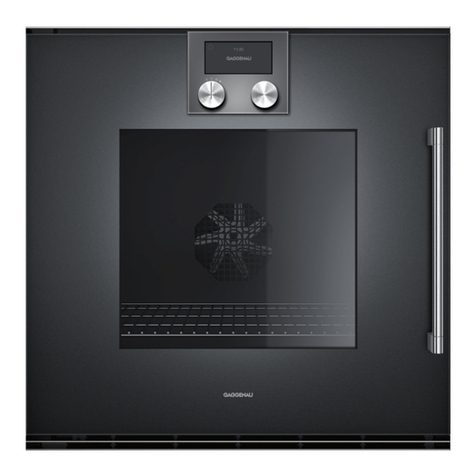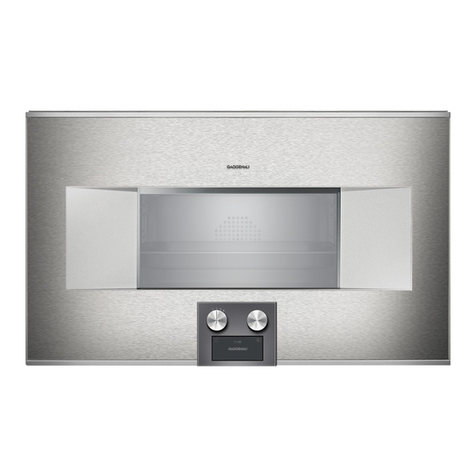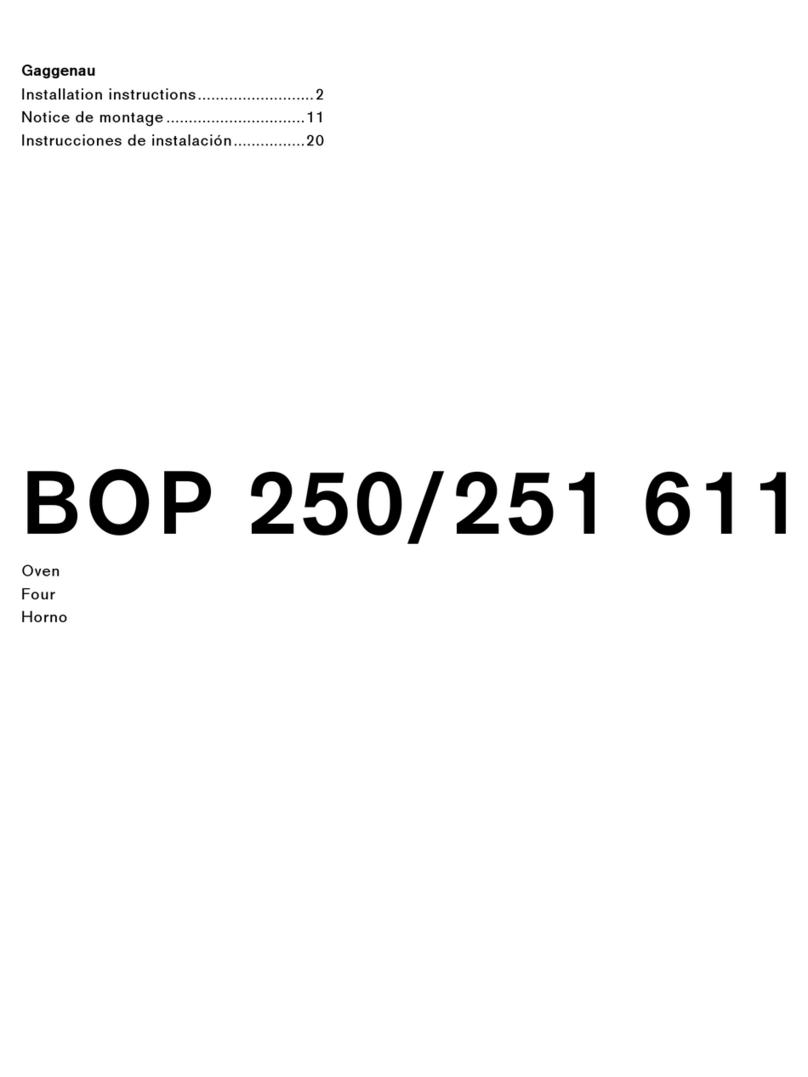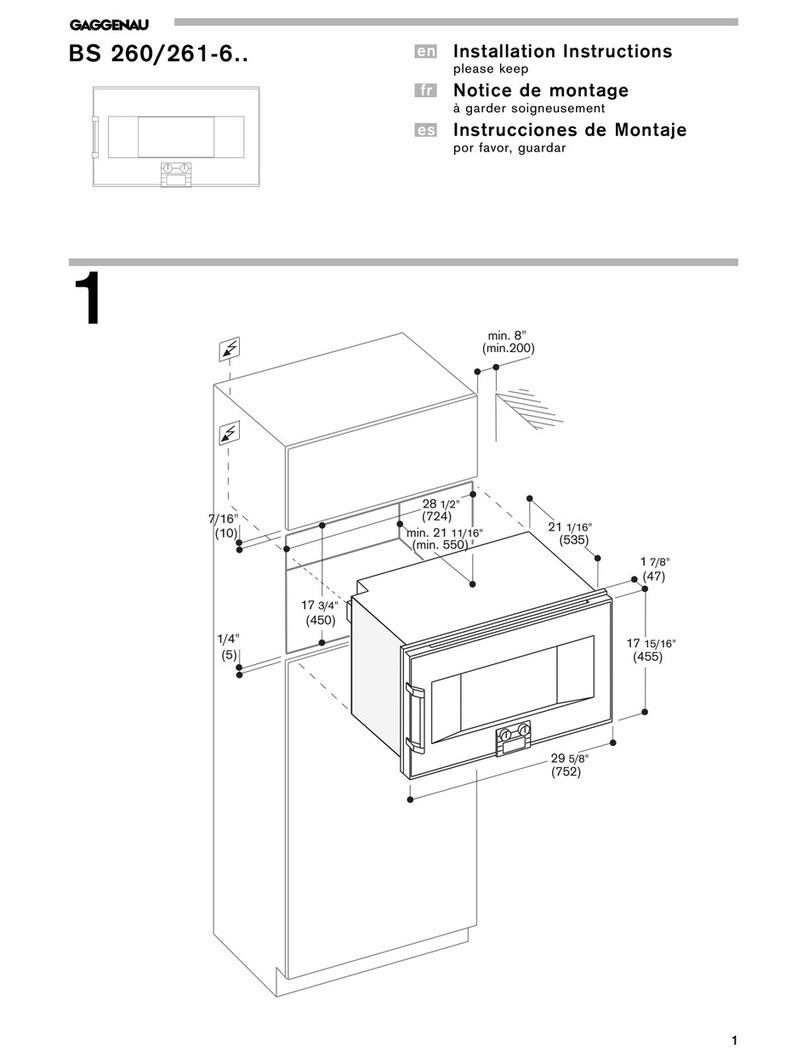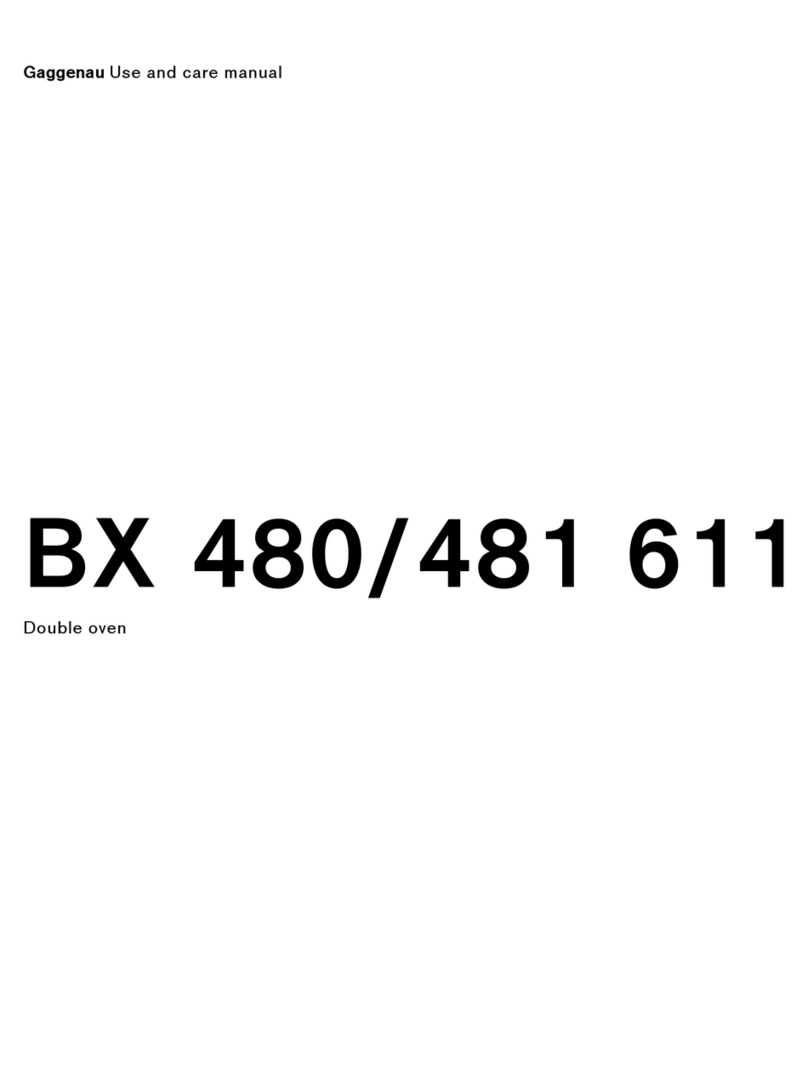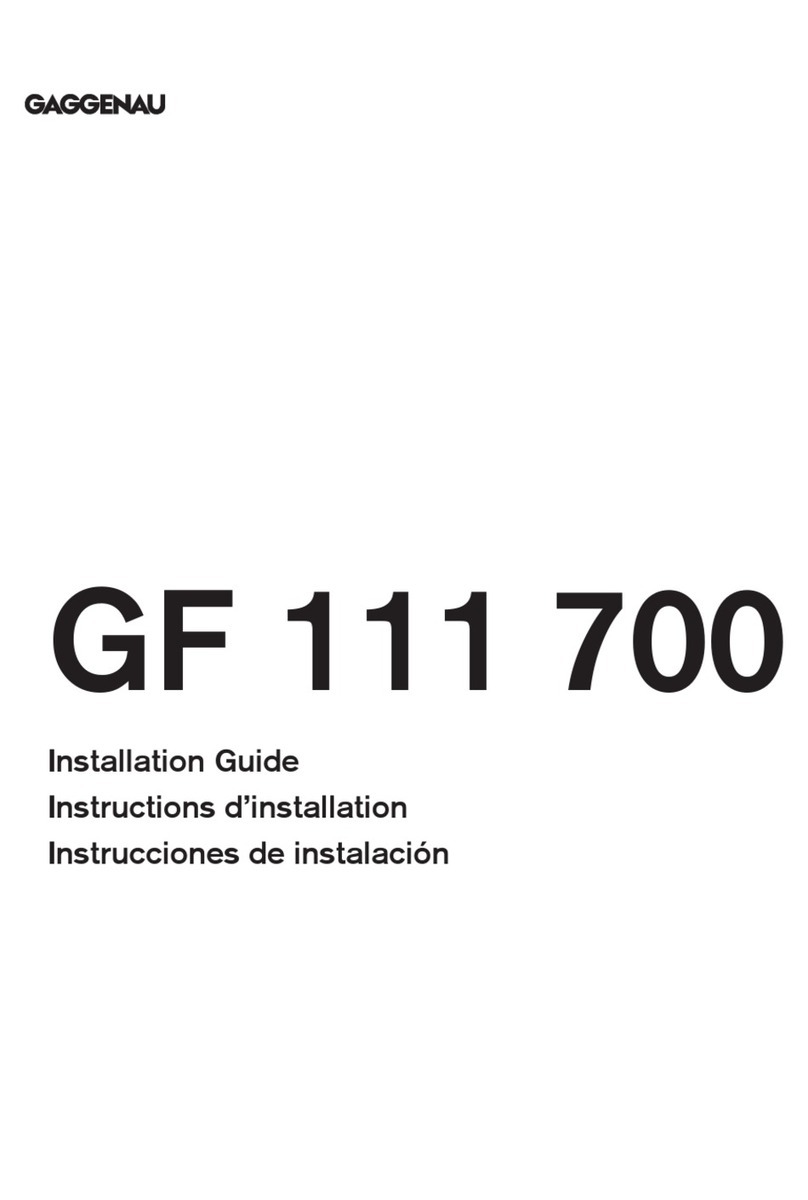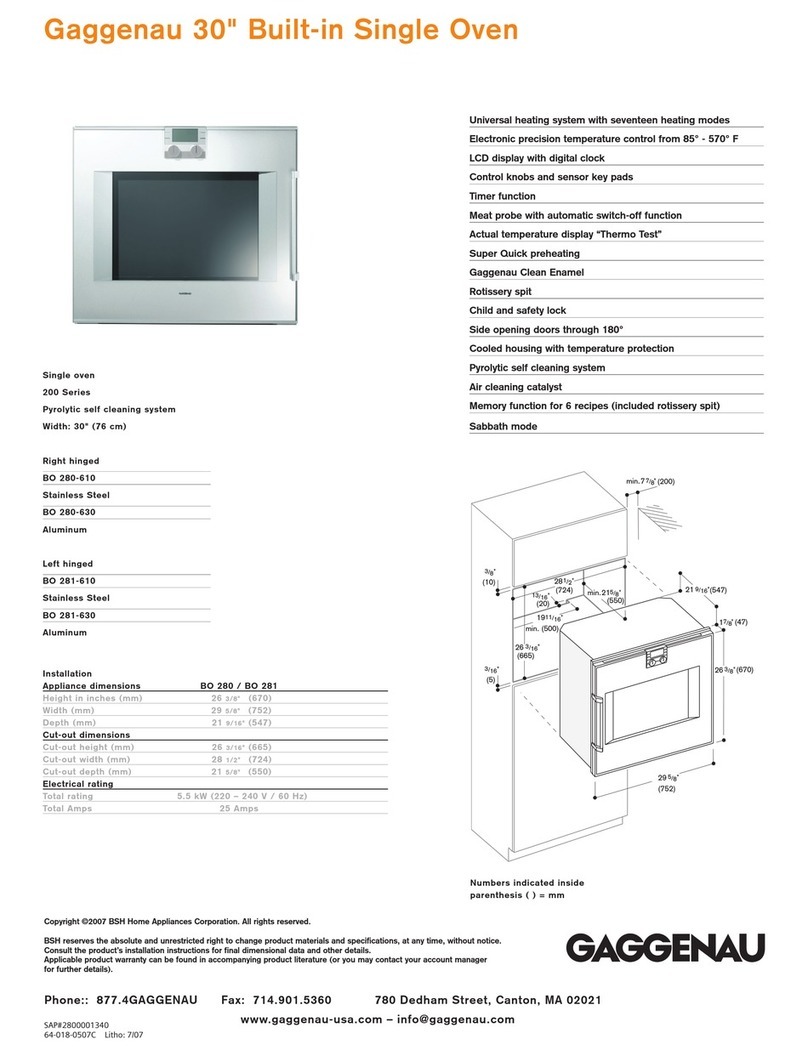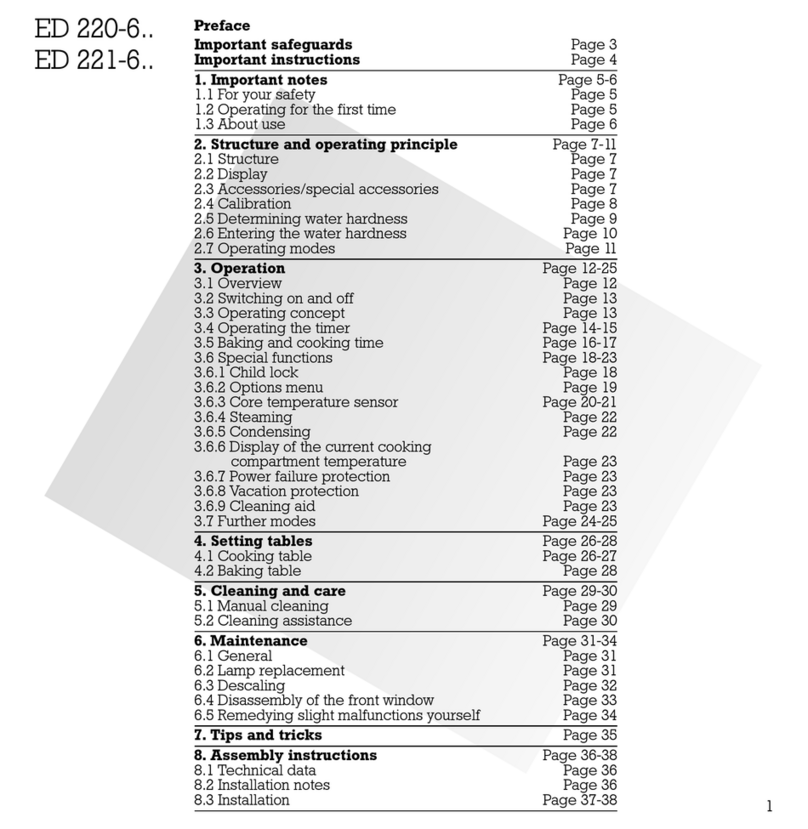4
Risk of scalding!
▯When you open the appliance door, hot
steam can escape. Steam may not be
visible, depending on its temperature.
When opening, do not stand too close to
the appliance. Open the appliance door
carefully. Keep children away.
Risk of scalding!
▯The water in the evaporator dish is still hot
even after the appliance has been
switched off. Do not empty the evaporator
dish immediately after switching off the
appliance. Allow the appliance to cool
down before cleaning it.
Risk of scalding!
▯Hot liquid may spill over the sides of
cooking containers when they are removed
from the cooking compartment. Remove
hot cooking containers with care and
always wear oven gloves.
Risk of electric shock!
▯Incorrect repairs are dangerous. Repairs
may only be carried out and damaged
power cables replaced by one of our
trained after-sales technicians. If the
appliance is defective, unplug the
appliance from the mains or switch off the
circuit breaker in the fuse box. Contact the
after-sales service.
Risk of electric shock!
▯The cable insulation on electrical
appliances may melt when touching hot
parts of the appliance. Never bring
electrical appliance cables into contact
with hot parts of the appliance.
Risk of electric shock!
▯Penetrating moisture may cause an electric
shock. Do not use any high-pressure
cleaners or steam cleaners.
Risk of electric shock!
▯A defective appliance may cause electric
shock. Never switch on a defective
appliance. Unplug the appliance from the
mains or switch off the circuit breaker in
the fuse box. Contact the after-sales
service.
Risk of electric shock!
▯The insulation of an incompatible meat
probe may be damaged. Only use the meat
probe which is recommended for this
appliance.
Causes of damage
Caution!
– Do not place anything on the cooking
compartment floor. Do not cover it with aluminium
foil. A build-up of heat could damage the
appliance.
The cooking compartment floor and the
evaporator dish must always be kept clear. Always
place ovenware in a perforated cooking container
or on a wire rack.
– Aluminium foil in the cooking compartment must
not come into contact with the door panel. This
could cause permanent discolouration of the door
panel.
– We recommend you use a mineral water low in
chloride and without added carbonic acid if your
tap water contains large amounts of chloride
(>40 mg/l). You can inquire with your local water
supply company to obtain information about your
tap water.
– Ovenware must be heat and steam resistant.
Silicone baking tins are not suitable for combined
operation with steam.
– Use only original accessories in the cooking
compartment. Rusting material (such as serving
platters or knives and forks) can cause corrosion
in the oven interior.
– Use original small parts (e.g. knurled nuts) only.
Order small parts from our after-sales service if
these should be lost.
– When steaming with a perforated cooking
container, always insert the baking tray or the
solid cooking container underneath. Dripping
liquid is caught.
– Do not store moist food in the closed cooking
compartment for long periods. It can lead to
corrosion in the cooking compartment.
– Salt, spicy sauces (e.g. ketchup or mustard) or
salted dishes (e.g. cured roast) contain chloride
and acids. These corrode the surfaces of
stainless steel. Always remove residues
immediately.
– Fruit juice may leave stains in the cooking
compartment. Always remove fruit juice
immediately and wipe the cooking compartment
with a moist and dry cloth.
– The cooking compartment in your appliance is
made of high grade stainless steel. Improper care
can lead to corrosion in the cooking
compartment. Refer to the care and cleaning
instructions in the instruction manual. After every
use, clean the cooking compartment after the
appliance has cooled down. After cleaning, dry
the cooking compartment with the drying
program.


